When it comes to Japanese food, the Japanese salmon skin recipe is even more special; its texture and flavor are markedly distinct. In traditional Japanese cooking, the crisping of the salmon’s skin to a crunchy, savory snack could be found. It then wasn’t a thing for the Japanese and, thanks to its source, of its popularity, many sushi fans in different corners of the world liked its savory taste, especially the crispy one from the salmon skin, in their favorite rolls and dishes. The crispy skin of the salmon, full of the umami note which such kind of fish gives, turned the dish into something that personified what Japanese cuisine had to offer in terms of seasoning and making do with quality ingredients.

Types of Japanese Salmon Skin Recipes: Grilled, Crispy, Marinated
Salmon skin is very useful in making many other dishes in different types of Japanese cuisine. Given below are the three types of Japanese salmon skin recipes, which are popular and their translation.
Grilled: Plain and simple, this is salmon skin, usually covered with fish seasoning, herbs, and spices of your own choice, then grilled to give nice crisp skin. It gets a savory touch from the smoky flavor added during the course of grilling.
Crispy: In Japan, the salmon’s skin is actually considered as a very popular snack. The normal way of eating it is right over rice or noodles. The process to a crunchy skin includes carefully peeling it from the fillet, drying through, and then frying it to a golden brown. The result would be a very satisfying crispy texture that could go well with different types of dipping sauce.
Marinated: Marinated salmon skin is a succulent, tangy delight: mellow, yet lively with the luxury of the skin and the sharp kick of the marinade. The regular method of cookery is for the skin to be immersed in a flavored blend that often includes soy sauce, mirin, ginger, and garlic, for some time before an extremely slow cook to tenderness. This is a recipe full of built-in umami, guaranteed to make your taste buds jump.
From crispy and grilled, to marinated, marinated—these represent the taken-for-granted aspect of the fish and turn it into a plate full of mouthwatering flavors.
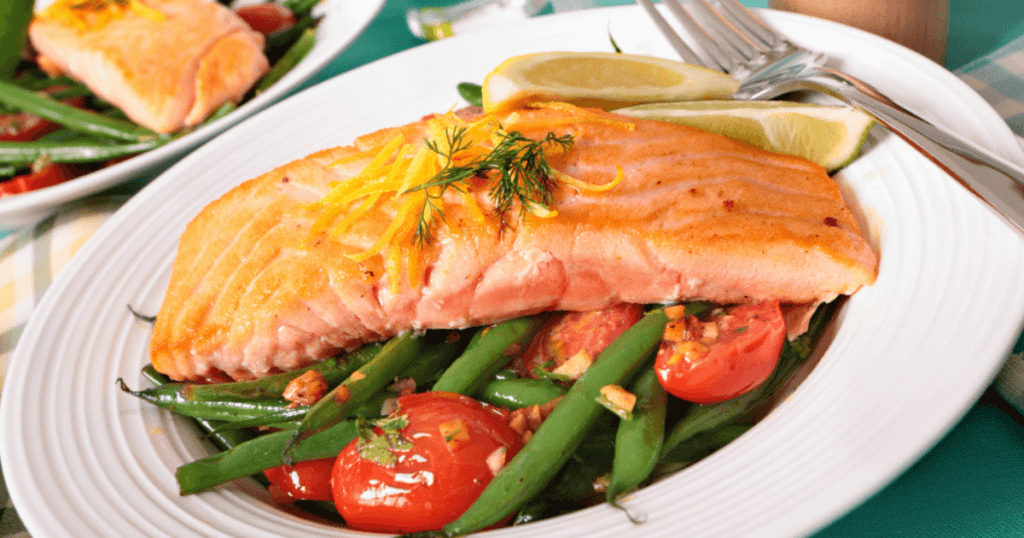
Ingredients-Japanese salmon skin recipe
Pan-Fried Crispy Salmon Skin
Ingredients:
- Salmon skin strips (from 2 large salmon fillets)
- Salt and pepper, to taste
- 1 tablespoon olive oil or vegetable oil
- Optional for seasoning: garlic powder, paprika, or a mix of your favorite herbs
Salmon Skin Roll
Ingredients:
- 4 strips of crispy salmon skin (use the pan-fried method above)
- 2 cups sushi rice, cooked and seasoned with sushi vinegar
- 1 cucumber, julienned
- 1 avocado, sliced
- 4 sheets of nori (seaweed)
- To serve, mix soy sauce, wasabi, and pickled ginger.
- Optional: sesame seeds, for garnish
Salmon Skin Salad
Ingredients:
- 4 strips of crispy salmon skin (use the pan-fried method above)
- Mixed salad greens (such as arugula, romaine, and baby spinach)
- 1 small red onion, thinly sliced
- 1/2 cucumber, sliced
- 1 carrot, julienned
- 1 avocado, diced
Dressing:
- 2 tablespoons soy sauce
- 1 tablespoon rice vinegar
- 1 tablespoon sesame oil
- 1 teaspoon honey or sugar
- 1 teaspoon grated ginger
- Optional: chili flakes, to taste
- Garnish: Sesame seeds, and sliced green onions
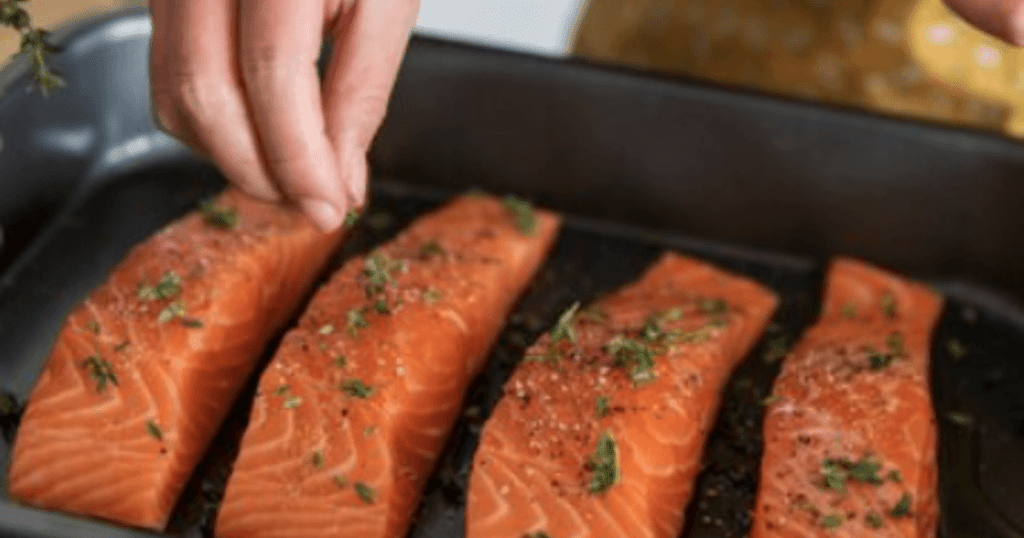
Step-by-Step Cooking Instructions: Japanese salmon skin recipe
To ensure the best texture and flavor when cooking salmon skin, proper preparation is key. Follow these simple steps to prepare salmon skin for cooking:
1. Thoroughly Clean the Skin:
– Rinse the salmon skin under cold water to remove any scales or residue.
– Gently scrub the skin with a brush to ensure it is clean.
– Pat the skin dry with a paper towel to remove excess water.
2. Remove Excess Moisture:
– Place the cleaned salmon skin on a clean, dry paper towel.
– Use another paper towel to gently press down on the skin and absorb any remaining moisture. – Ensuring the skin is dry will help achieve a crispy texture when cooked.
3. Cut into Desired Portions:
– Using a sharp knife, carefully cut the salmon skin into the desired portions.
– You can cut the skin into strips or squares, depending on how you plan to cook or serve it.
– Uniformly sized portions will ensure even cooking and presentation.
The steps below will lead you through to properly prepare the salmon skin for further cooking in any preferred style. Taste it now and take all those health benefits that salmon is known for.
Different Cooking Methods
When cooking salmon skin by applying different cooking textures and tastes to what is required, for instance, pan-frying, baking, and applying a grilled texture with salmon skin.
1. Pan-Frying:
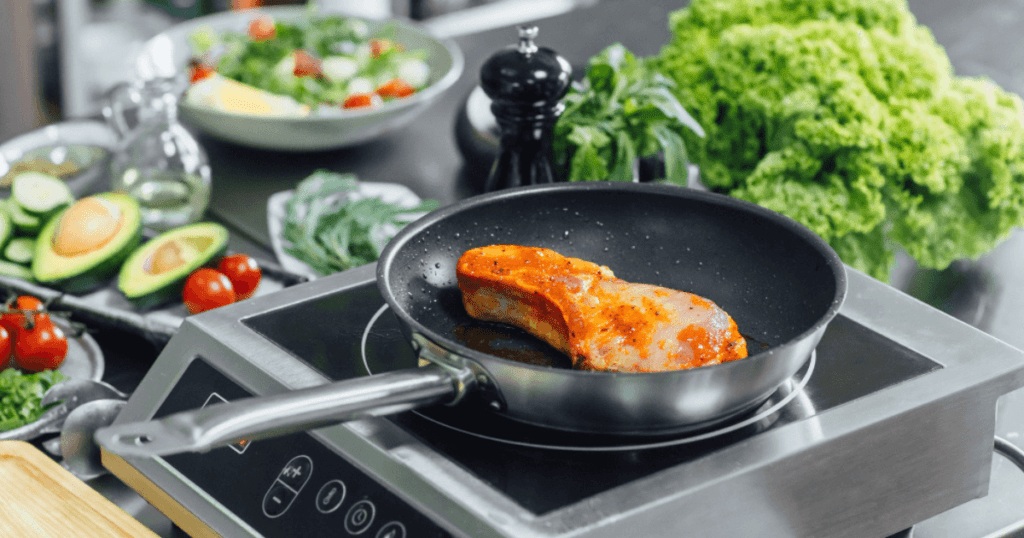
– Add a little quantity of butter or oil to a nonstick skillet and heat it over medium-high heat.
“Now, don’t forget to chuck that money that was in the paper bag, so your salmon gets really crispy,” Liz added to the instructions. Place salmon skins in the pan skin-side down; cook for 3-4 minutes, or until golden and crunchy.
“Cook until the skin is crispy, usually 1-2 minutes,” says Freedman. “It’ll leave you with crispy, mouthwatering salmon skin to throw on top of your salad, rice bowl, or even add that final touch of ‘crunch’ to your sushi and sashimi.
2. Baking:
– Season the salmon skin with your favorite seasonings, such as salt, pepper, or herbs, to enhance the flavor.
– Place the seasoned salmon skin on a baking sheet lined with parchment paper.
Bake at 375°F (190°C) in a preheated oven for around 10-15 minutes until most of the skin gets crispy and golden in color. Bake the salmon skin into a tasty and oh-so-crispy chip; you can use this as a perfect snack for in-between meals or for sprinkling on top of ramen. At the
3. Grilling:
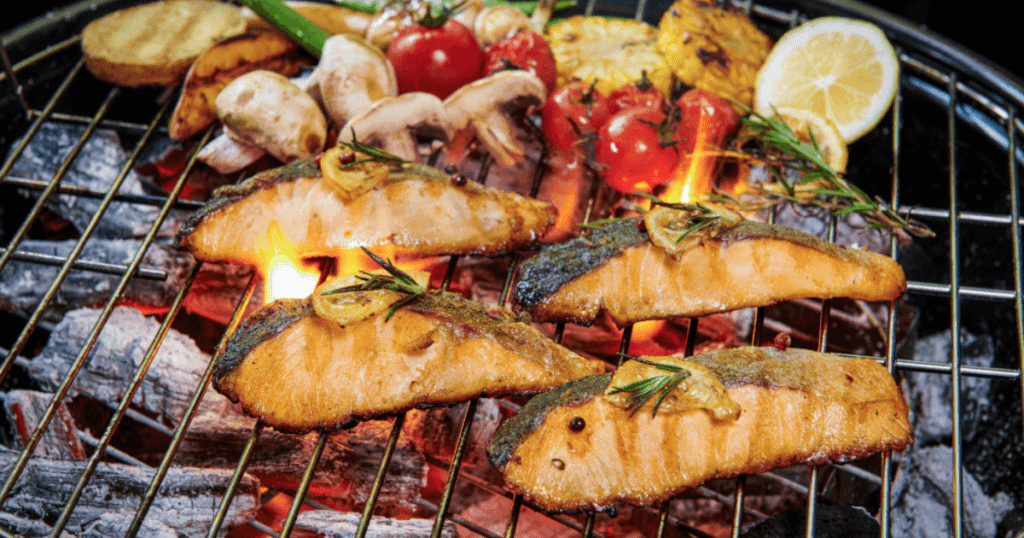
– To avoid sticking, oil the grill grates lightly and preheat the grill to medium-high heat.
Put the skin side of the salmon down onto the grill and cook for 3-4 minutes until the skin is crispy and looks beautifully grilled.
Turn the skin over, and grill for an extra 1-2 minutes. The skin of the salmon will be loaded with that brilliant smoky flavor and is so versatile in salads, tacos, or even in a tasty seafood platter.
With these different cooking methods for preparing salmon, everything great can even be made possible with the skin variable and great when cooked by pan-frying or baked in your oven according to your style and taste in cooking. By following the take-out complete food cooking instructions as above, you will be all set to amaze your family and friends with delightful food that is not only tasty and appealing but also looks delicious—prepared well to give a very pleasant dining experience. Cook happily!
Benefits of Japanese salmon skin recipe
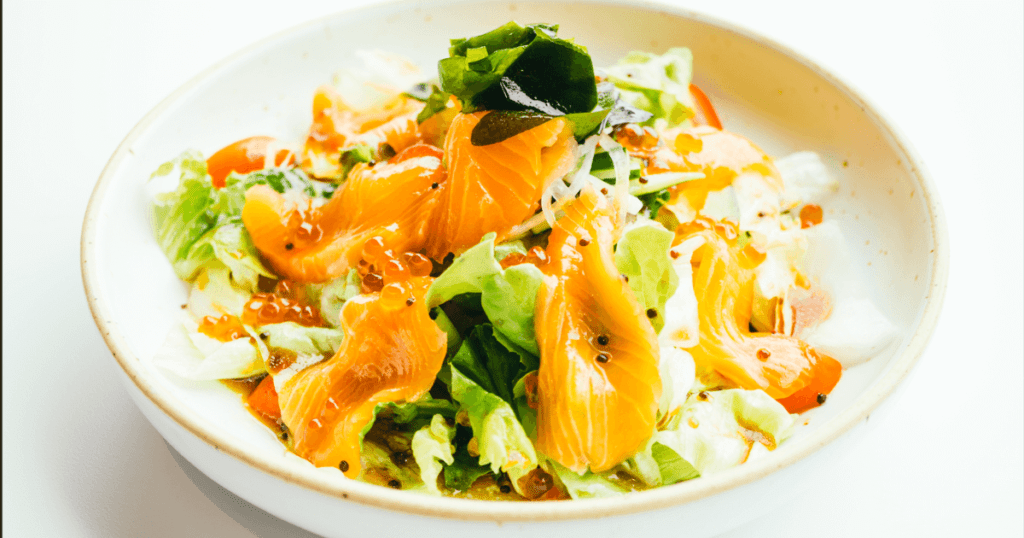
Not only that, but also there are a lot more health benefits that come along with the consumption of salmon skin, but unfortunately, studies and research always bypass the skin part, something that has been rare to include in our diet. In this light, below are top benefits of including salmon skin in your meals:
Rich in Omega-3 Fatty Acids:
– The skin of the salmon contains more long-chain omega-3 fatty acids like eicosapentaenoic (EPA) and docosahexaenoic (DHA) than most others.
– The omega-3 fatty acids have been much sought after, particularly due to their anti-inflammatory effects over the onset of illnesses such as heart disease and arthritis.
High Protein Content:
– Salmon skin is a protein powerhouse, providing essential amino acids necessary for muscle growth and repair.
– Protein from salmon skin can aid in weight management by promoting satiety and supporting lean muscle mass.
Abundant in Vitamins:
– Salmon skin contains various vitamins, including vitamins B6, B12, and D, which are important for energy production, nerve function, and immune support.
– Vitamin D in salmon skin helps in calcium absorption and bone health, crucial for overall well-being.
Salmon skin is simply a delicious and healthy meal filled with lots of omega-3 fatty acids, proteins, and necessary vitamins to boost one’s immune system. He added that eating right, following a sustainable diet, and keeping fit accrue benefits that are unimaginable. Having crispy salmon skin as an entrancing snack or pan-seared with meals is one way to accrue such benefits.
You may love to read:
Japanese grilled teriyaki chicken recipe
How to serve Japanese salmon skin recipe
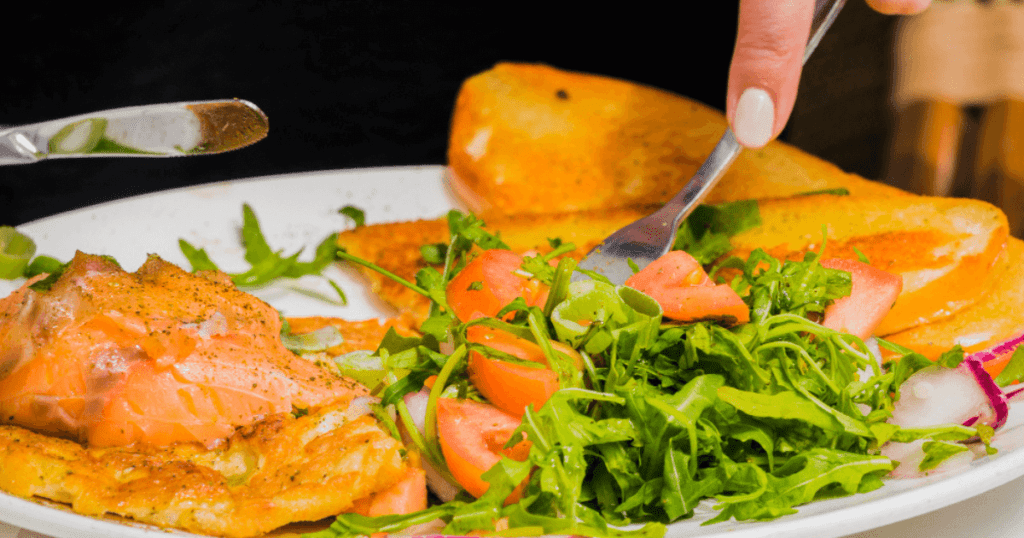
Including Japanese salmon skin in your preparations just unravels a whole new dimension of how to prepare delicious cuisines with an added pleasant bite of texture and taste. Here are a couple of serving ideas:
Top Sushi Rolls with Crispy Salmon Skin:
The crispy salmon skin stands for almost two food groups out of the five, all rolled into a sushi roll: savory, crispy, and perfectly fitted to the fresh fish and rice.
They might be garnishes resting atop maki rolls or temaki (hand rolls), or in fact, they could very well be the star of specialty rolls, giving your sushi creations a deliciously contrasting texture and taste.
Serve Pan-Seared Salmon Skin Alongside Steamed Vegetables:
The Chefs assure the delectable dish would be Pan-Seared Salmon with Crispy Skin, which on being served next to a bowl of steamed vegetables is bound to keep hunger at bay, all within a taste that reigns sumptuously succulent.
Whether served with a mix of crisp-tender vegetables or side-by-side next to something like a vibrant stir-fry, the skin, pan-seared to perfection, is perfectly crisp, practically shattering and caramelizing atop the salmon. This adds the textural element that that fish needs while actually giving these pieces an even more savory flare.
These are the serving suggestions, which ascertains the wide range of applications Japanese salmon skin can be used in and applied to: “Have it as a topping of your sushi or at the side of the plate with vegetables to have a mix of texture and flavor that’s sure to hit the spot.
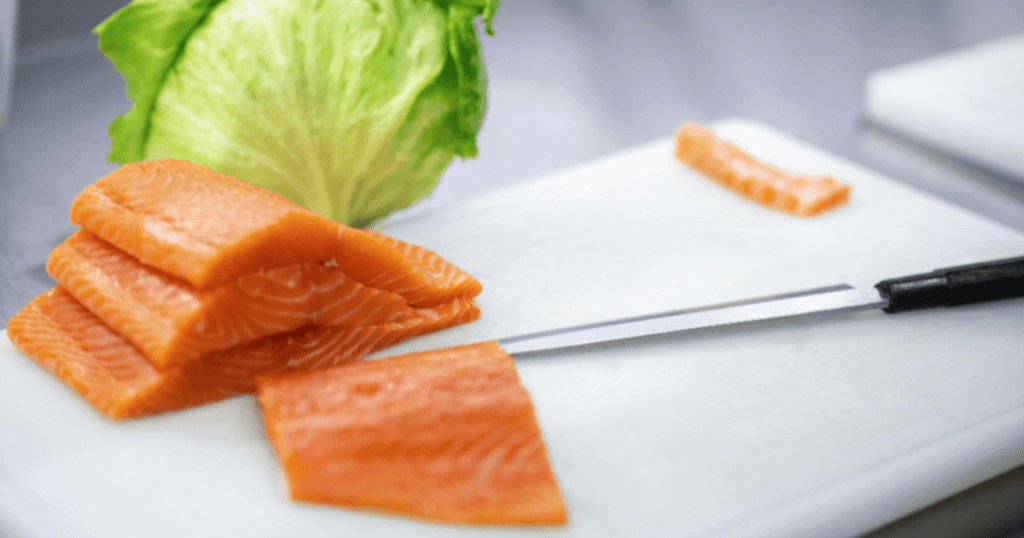
Frequently Asked Questions (FAQs)
How to prep salmon skin for sushi?
Lightly season salmon with salt and pepper. Preheat a large heavy-bottomed non-stick frying pan on high. Heat 1 tablespoon of vegetable oil on medium heat. Place salmon in pan, skin side down. Cook for 3-5 minutes, or until skin is crisp. Remove salmon from pan and place onto some paper towel to absorb the excess oil.
Why is salmon skin so tasty?
This is because most people either boil, smoke, or steam the salmon, making the skin be a disappointment to eat, as it is somehow soggy and rubbery. However, when the skin is grilled, seared, or fried, it turns crunchy, making it delicious from the fat.
Is it OK to eat salmon every day?
How much salmon you can eat in a day, let alone in a week? Ashlea generally puts it that there’s not an exact set amount of daily fish to eat—it comes down to about 2 to 3 servings of fish in a week. “On the other hand, if you’re eating salmon every day, you also could be at risk for a nutrient lack of variety,” she explains.
Can I eat salmon raw?
Consumption of raw or undercooked salmon may lead to health hazards. Raw or undercooked salmon is associated with foodborne diseases such as salmonellosis, norovirus, and infection with Vibrio. Consumption of Salmon may contain salmonella and may result in the following symptoms: diarrhea, fever, and abdominal cramps.
Why is salmon so expensive?
Like every perishable product, the journey from where salmon is ‘caught’ to the customer’s plate involves very tight logistics. This may employ boats, trucks or even planes especially if sourcing from remote locations. Every step in this logistic chain incurs costs which, not unsurprisingly, add to the salmon’s last over-the-counter price.
What are the disadvantages of eating too much salmon?
Salmon is an oily type of fish, and just like any other food, taken in excess will lead to one gaining weight and the health problems it is likely to bring. Though it is on the lower tending in comparison to other types of seafood, mercury is also contained in salmon and leads to a health problem in huge amounts. We strongly recommend a balanced diet for you.

Final words: Japanese salmon skin recipe
Briefly, Japanese salmon skin is crispy and delicious, given the wonderful and highly innovative culinary character that is portrayed in the feeling of eating something crispy and salty. Either one can get creative in varied ways of preparations, like making crispy salmon skin chips and then pan-searing them with teriyaki glaze, for example. Preparations, ways to cook, and serving suggestions may turn even the most common sea ingredient into a delicacy. Having fished the ingredients, roll up your sleeves, and prepare to dive into the world of juggling deliciousness with Japanese salmon skin dishes right in your kitchen. Happy cooking!
